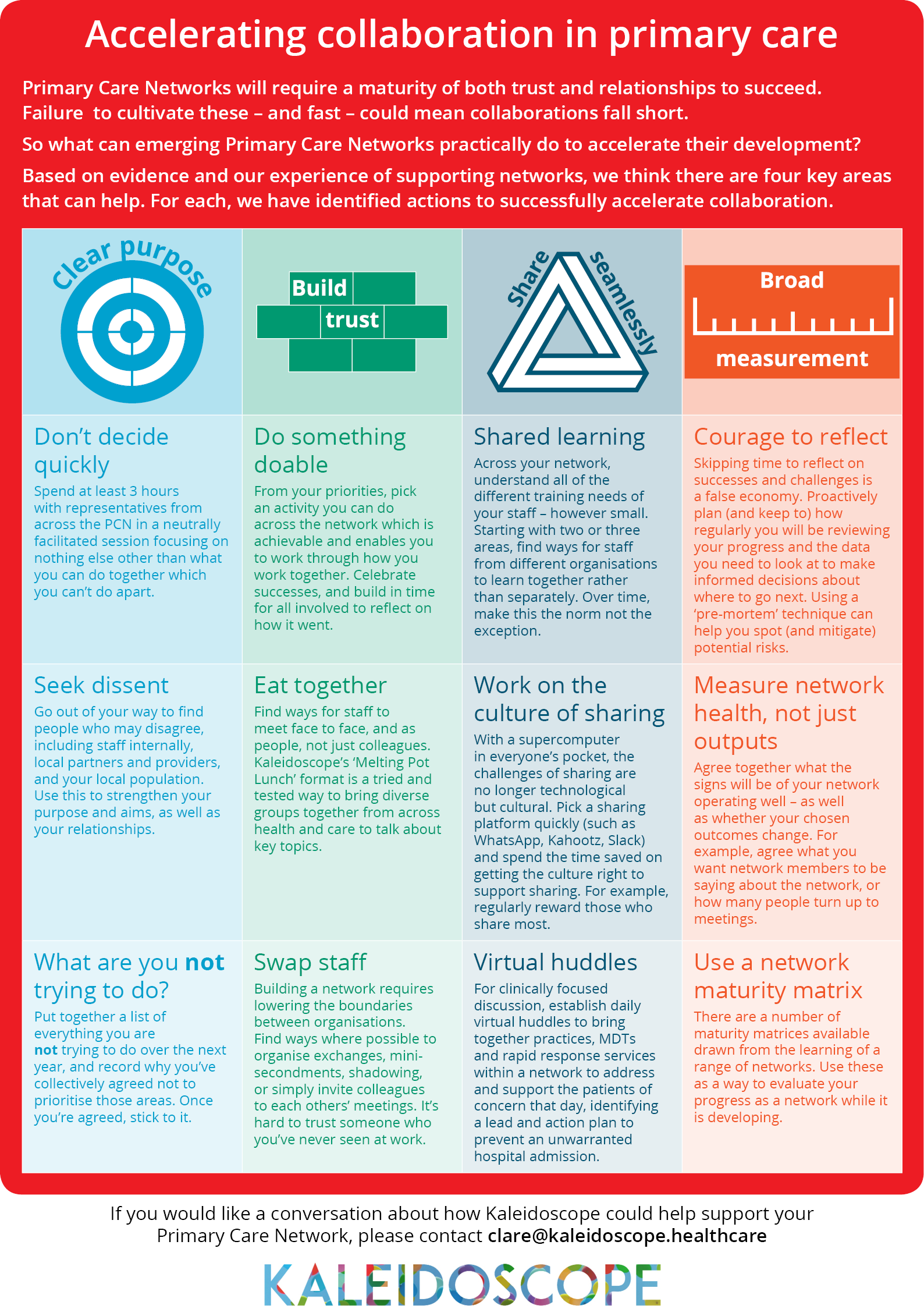You made it! The 1st July has come and gone. The Primary Care Network is in place, the network agreement (largely) agreed and signed, you have a way forward on extended hours, and now you are “live”. But what is next for the PCN Clinical Director? Now you are officially on the payroll, it is time for the first 100 days.
Senior leaders often start new roles with a plan for their first 100 days. They are important because they set the tone for how things will be under your leadership. Here are seven things for new PCN Clinical Directors to consider making part of your 100-day plan.
1 Focus on relationships over delivery
The biggest mistake eager new leaders make is to have an almost zealous focus on delivering sweeping changes as early as possible in their tenure. They feel the need to prove themselves in the job by showing they can make change happen fast.
Practices are already nervous about the introduction of PCNs. A new PCN CD dictating to practices how things are going to be within a few weeks of taking on the role is going to make these feelings worse. Even if you are able to bulldoze through how the pharmacist is going to work in every practice, it will be at the cost of the trust, discretionary effort, and support that you will need going forward.
Instead, focus on listening to practices, understanding their different needs and challenges, and the concerns and hopes they have about PCNs. At the same time, identify the key leaders in the community, mental health and voluntary organisations in your area. Ask to meet them, don’t wait for them to approach you. A network of strong relationships will be essential for future success.
2 Ensure a communication system is in place
Communication across all members of a practice is not always great. If practices don’t know what the PCN is up to, mistrust will grow. The challenge for PCNs is enabling two-way communication across a group of practices. Ask practices what they want – a WhatsApp group, a weekly email, or whatever will work locally, and how often, and put it in place. If you achieve nothing other than putting an effective communication system in place you can consider your first 100 days a success!
3 Agree what success for the PCN looks like
You may be one of the few PCNs who before they got lost in the details of network agreements and extended hours took time to agree what the PCN was for, what its purpose was, and how success would be measured. But if not, now is the time for the PCN CD to find out from practices what success for the PCN means to them, and then to play back something that all can relate to, so both you and the practices are clear on what exactly it is you are trying to do in your role as PCN CD.
4 Under-promise and over-deliver
This sounds simple, but all too often new leaders make grand promises early on to try and build support based on what they are going to do. They then spend the rest of their time having to explain why they haven’t lived up to their initial claims. It is far better to be cautious in what you say you can deliver, and to build trust as you go by not only consistently doing what you said you would do, but often times achieving considerably more.
5 Select the Meetings you attend carefully
The NHS has a nasty habit of taking new leaders and swamping them with more meetings than it is possible for any diary to bear. The challenge in your first 100 days is to keep as much control of your time as you can. You must decide the meetings you go to; do not let the system decide for you. Ultimately you will be judged on the success of your network, not on the number of meetings you have attended. If you are always in meetings you will have very little time for real delivery, and very little time for the visible presence you will need at practice level to build that all-important support and trust.
6 Find your personal support
Leadership is lonely. You will, however supportive practices are right now, have to make some very tough and most likely unpopular decisions. There will be times when choosing the right way forward will be hard, and you won’t know what to do. These are the times when you will need support; people you can turn to who you can trust and who will help you work things through. Better to find this support and have it in place before you need it, rather than wait until the inevitable crisis arises. It may be a trusted colleague in your PCN, the CD of a neighbouring PCN (you are all on the same side), or someone else whose experience and opinion you value. Make finding this support a priority for your first 100 days.
7 Deliver some small wins
Now remember you are not trying to deliver any sweeping changes in your first 100 days. By small win we are not talking about anything major. But if from your conversations with practices, listening to GPs, and meeting local stakeholders there are things you see that can be done that are relatively easy to implement (without generating antibodies!) then make them happen. No one is expecting a miracle straight away, and setting a tone of positive change can create momentum for the bigger challenges ahead.




